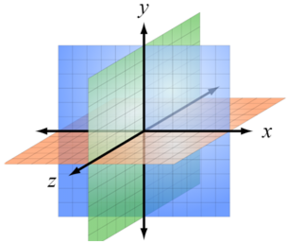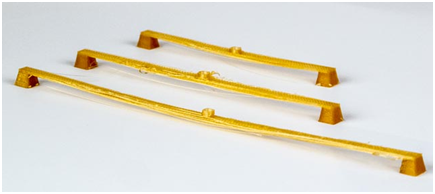3D
Printing, also known as desktop fabrication or additive manufacturing, is a
great way to express your inner creativity. FlashForge printers can create
prototype models of objects from digital 3-dimensional designs. After the
designs are created or downloaded, normally in an STL format, they are sent to
the printer, which creates your model layer by layer.

There are many different 3D
printing technologies of varying complexity, but the most basic concept is
rather simple. The machine builds your object from the ground up by adding
layers of different shapes on top of each other. This scale-up process
differentiates 3D printing from other manufacturing processes.
3D printers are amazing devices
enabling creativity and innovation. In this blog, we will look into a couple of
the key concepts and important information to help you get started on your 3D
printing journey!
Getting Started
Although 3D printers can be
expensive, price is not the main reason why many people hesitate when
purchasing one for their home or office. The complexity of operating the device
is also not a barrier. The wide variety of different options available is what can
make choosing the right printer and software a hard task.
From the technology and filament
material, to the modeling software: there are professional and beginner
packages available, with everything in between. It is all up to you to choose
the printer that fits you and your circumstances the best. You can look for
reviews online or contact us, if in doubt about which printer is best for you.
FlashPrint is the easiest and most
reliable software to use with our FlashForge printers. It is free to download,
use and has a beginner friendly intuitive layout. Simply download your desired
model from i.e. Thingiverse, configure the print using the software, upload to
a printer and print! Creating your own custom models has never been easier.
Key Concepts of 3D Printing
3D
Coordinates: The
visual representation of the X, Y, Z axis is what makes 3D printers unique. The
coordinates help determine a point in space, which the printer uses as a guide to
extrude the material in layers, creating the object. The software converts the
coordinates to a format the printer can understand (STL file instructions).

Polygons: This concept revolves around the idea that a number of
polygons put together make a shape. A model with lower resolution will have fewer
polygons in the space and look crude.
On the other hand, models of high
resolution with more polygons will result in a smoother and more detailed
surface. Both of these have their advantages, for example, low resolution
models are used in architecture and art, allowing designers to print
recognizable design.

Credit:
MakePrintable.com
Infill: The inside of the model will never be seen from the
outside. This space does not always have to be solid, and many times designers
use a hollow honeycomb structure to support the model. A higher infill will
result in a more durable, heavier print which requires more material. The
infill closely depends on the purpose and size of the model, but the majority of
modeling software will allow you to easily change the infill with only a few
clicks.

Credit:
MatterHackers.com
Bridging: Building a bridge over an empty space with no support
pillars can cause the structure to bend and fall as the filament cools. The
greater the distance between the points being connected by the bridge, the more
it will be bending. The best way to avoid this is to think about the
orientation of the model when being printed. For example, printing a table with
the legs pointing down will result in bending, but printing it upside down will
make sure the platform is flat.

Credit:
3DGeni
Max
Size: There is a
clear limitation on the size of an object that can be built using a 3D printer.
The printer will fail to function properly if your object is larger than the
printer´s build surface. In that case, you can either make the print smaller or
break it down into smaller pieces and then glue them together to get a large
model.
Want to Know More?
We hope this blog helped you understand the basics of 3D printing. If you still cannot decide on a printer or if you keep having issues with the one you already own, we offer personal delivery with installation and service checks to make sure your 3D printing goes as smooth as possible.
